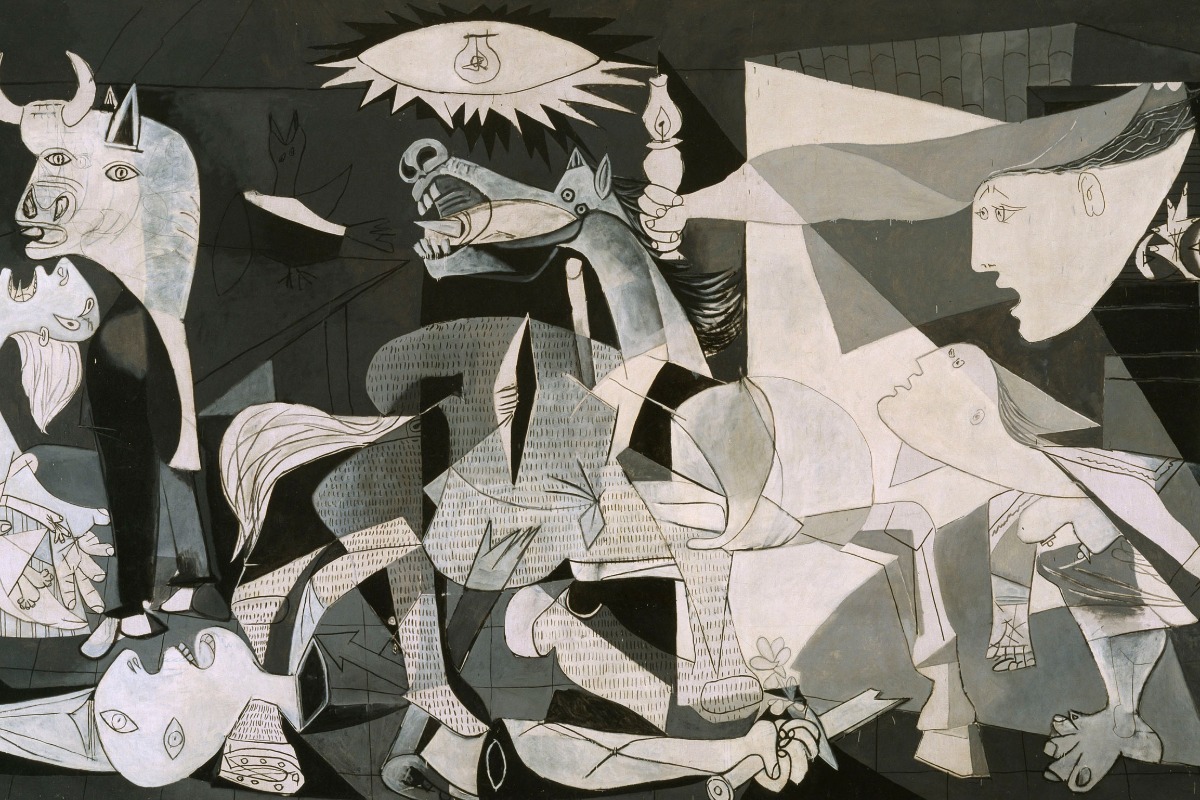Art Term of the Month: Spooky – Modern Horrors
10/31/2021

In 1937, during the Spanish Civil War, the Basque city of Gernika was bombed by the German and Italian armies as a show of support for the nationalist forces fighting against the government of the Second Republic. This event inspired Pablo Picasso to create one of his most well-known paintings, “Guernica.”
The painting itself is a monochrome scene of wartime horror. All figures bend and distort in agony, showcasing the eerie side of the Cubist style. Symbols such as the lightbulb in the eye in the sky (the technological evolution of warfare and omnipresence of the enemy), the spooked horse (animalistic terror) and the staring bull (looming specter of violence) all point to the horrors of these bombings – the helplessness of the city’s inhabitants under the unstoppable fall of the bombs. The mother wailing over her dead child drives home the brutality of this attack.
Transcending the specific event it was based on, Guernica is a timeless, universal symbol, vilifying the implacable and criminal destruction of war, and opening artistic debate on the representation of armed conflict.
